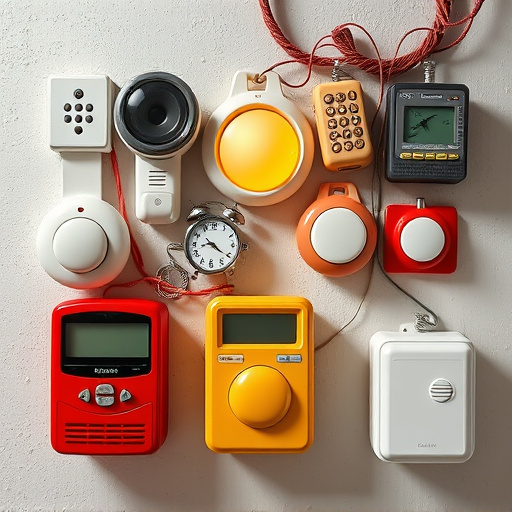Panic alarms, with high-decibel sounds capable of reaching 500 feet, serve as distress signals during emergencies, attracting attention from neighbors and emergency services. When selecting a personal safety device, consider sound loudness and uniqueness for quick response, carry distance for accessibility, durability, water resistance, battery life, and ease of use. Regular testing (including a test mode for distance check) and proper maintenance, such as cleaning, checking for damage, and replacing parts per manufacturer guidelines, are crucial to ensure reliable operation in critical situations.
In an emergency, personal safety devices like panic alarms can be life-saving. This article guides you through understanding the basic concept of panic alarms and their powerful sound carry distance, factors to consider while choosing one, and crucial testing and maintenance practices to ensure they’re ready when needed most. By delving into these aspects, you’ll be better equipped to make informed decisions for your safety.
- Understanding Panic Alarms: The Basic Concept and Its Power
- Factors to Consider When Choosing a Personal Safety Device
- Testing and Maintenance: Ensuring Your Device is Ready When You Need It Most
Understanding Panic Alarms: The Basic Concept and Its Power
Panic alarms are designed to deter attackers and draw attention in emergency situations, utilizing a powerful tool—sound. When activated, these devices emit a loud, high-decibel sound that can carry distances, often up to 500 feet or more, depending on environmental factors. This auditory signal serves as a distress call, alerting neighbors, passersby, or emergency services of an individual’s predicament.
The basic concept behind a panic alarm is simplicity itself: when faced with danger, one can quickly and easily activate the device to signal for help. Modern panic alarms often come in portable forms, such as personal buttons or keychains, allowing users to carry them wherever they go. This ensures that help is never far away, offering peace of mind and a sense of security in unpredictable situations.
Factors to Consider When Choosing a Personal Safety Device
When selecting a personal safety device, several key factors should be top of mind. Firstly, consider panic alarm sound – the loudness and distinctiveness of the alert is vital to ensure it catches attention quickly. Secondly, carry distance is crucial; you want a device that can be easily accessed and used even if it’s slightly out of reach. This could make the difference between safety and danger.
Additionally, think about durability and reliability – these devices should withstand tough conditions and remain functional in emergencies. Water resistance and long battery life are often desirable features. Lastly, ease of use is paramount; the device should be intuitive and simple to activate, even in moments of extreme stress or disorientation.
Testing and Maintenance: Ensuring Your Device is Ready When You Need It Most
Regular testing and proper maintenance are vital aspects of ensuring your personal safety device is reliable in an emergency. Most devices, such as panic alarms, have a simple test mode that allows users to check their functionality from a distance. This feature is crucial for assessing the carry distance of the alarm’s sound, making sure it can alert others when needed. Testing should be done periodically, especially after battery replacements or device updates, to guarantee optimal performance.
Proper care includes keeping the device clean and dry, as moisture can interfere with its operation. It’s also essential to check for any signs of damage or wear and replace parts if necessary. Many manufacturers provide clear guidelines on maintenance routines, ensuring users stay safe by maintaining their equipment’s readiness when faced with unexpected emergencies.
Personal safety devices, particularly panic alarms, can be life-saving tools. By understanding their basic functions, like the powerful Panic Alarm Sound and its carry distance, and considering factors like reliability and ease of use, individuals can empower themselves in emergency situations. Regular testing and maintenance ensure these devices are ready when needed most, providing peace of mind and enhanced personal security.
